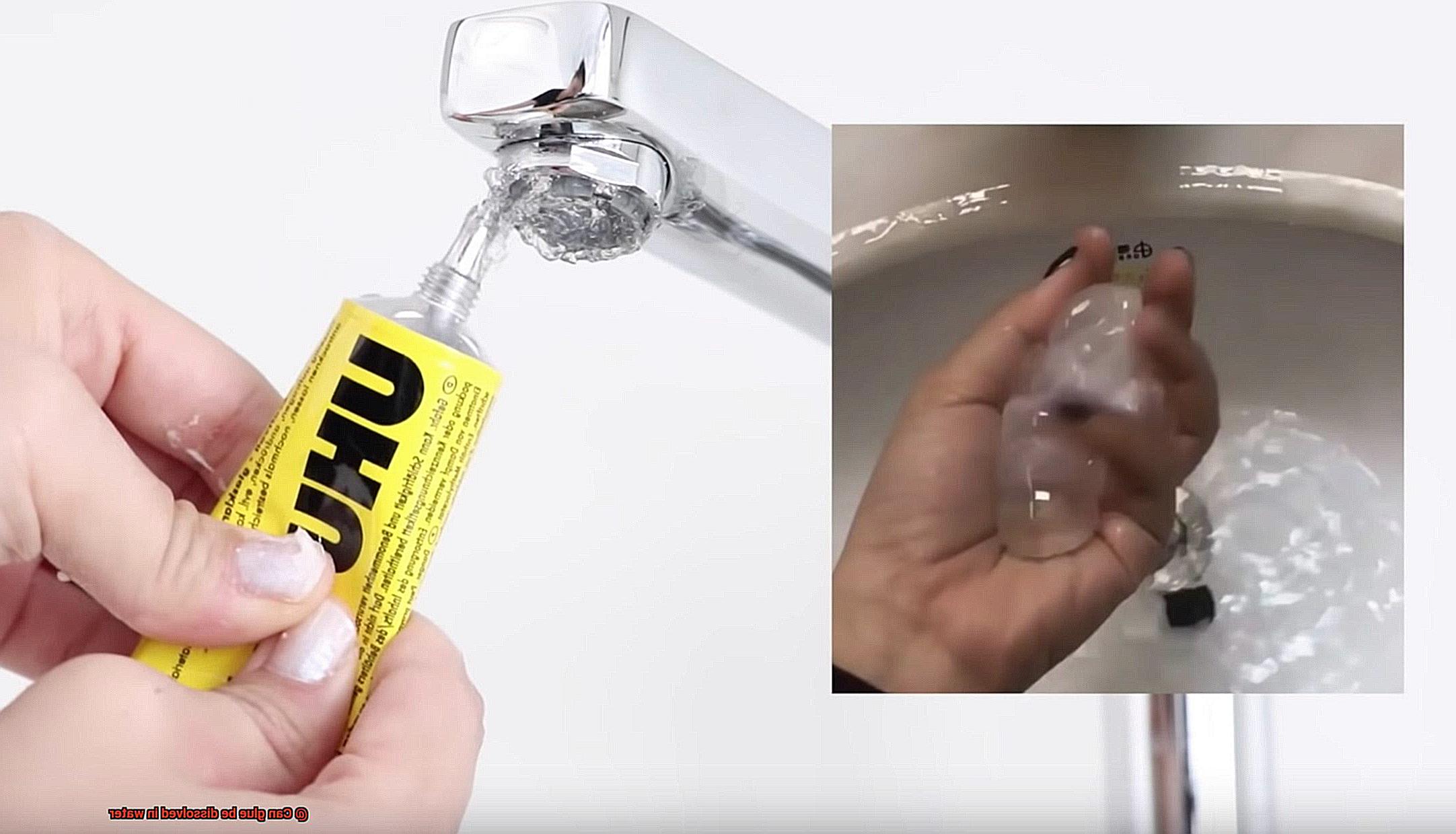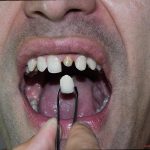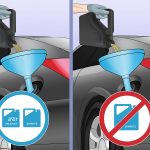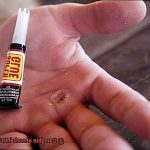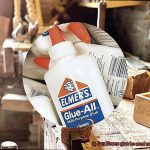Have you ever found yourself in a sticky situation, trying to figure out how to undo some poorly placed glue? Whether you’re a seasoned crafter or not, it’s important to know whether or not glue can be dissolved in water. This seemingly trivial question can have significant implications for the effectiveness of cleaning up spills, altering projects, or even the safety of your equipment.
So, can glue be dissolved in water? The answer isn’t as straightforward as a simple yes or no. It depends on the type of glue you’re dealing with. Some adhesives, like Elmer’s glue, are water-soluble and can be easily dissolved and cleaned up with water. However, other glues such as superglue or epoxy require a different approach for removal.
It’s essential to know which types of glue are water-soluble and which are not so that you can choose the appropriate cleaning method and avoid any damage to your surfaces, clothes or equipment. In this blog post, we’ll dive deeper into the science behind glue adhesion, break down the different types of glue and provide tips on how to remove glue safely and effectively.
Let’s get unstuck and explore the fascinating world of glue solubility. By understanding how different types of glues interact with water, you’ll be able to tackle any sticky situation with ease.
So, grab a cup of tea (or coffee), sit back and let’s delve into all things adhesive.
Types of Glue and Their Properties
Contents
When it comes to choosing the right glue for your project, the properties of the glue can make all the difference. There are many types of glue available in the market, each with its own unique properties and characteristics. Some glues are water-soluble while others are not. So, what exactly does solubility mean when it comes to glue?
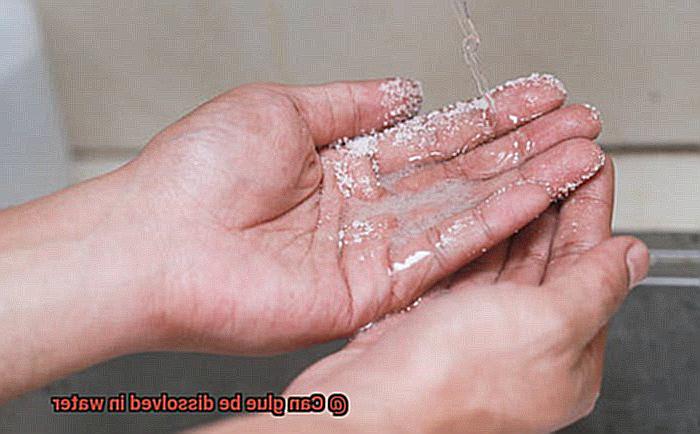
Water-soluble glues, such as white glue or school glue, are made from natural substances like animal protein, vegetable starch, or cellulose. These glues work by forming a weak bond between the two surfaces being attached. When the glue dries, it hardens and creates a strong adhesive bond. However, if water is applied to the bond, the glue will start to dissolve and weaken the bond.
On the other hand, non-water soluble glues such as superglue or epoxy glue cannot be dissolved in water. These types of glues are made from synthetic substances like polyurethane, epoxy, or cyanoacrylate. They work by creating a chemical reaction between the adhesive and the surface it is being applied to. Once the glue hardens, it creates a strong bond that cannot be easily broken. Even if water is applied to the bond, it will not dissolve or weaken the bond.
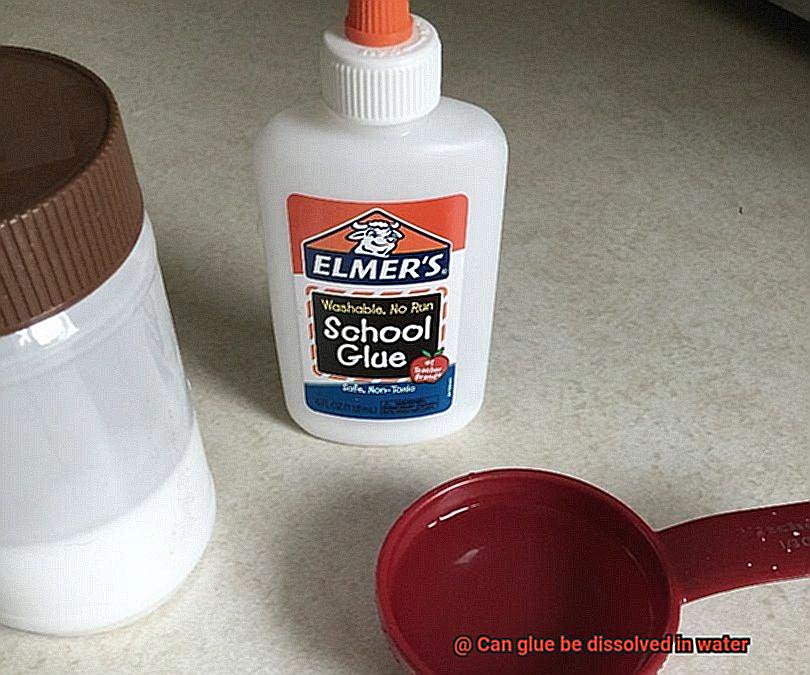
It’s worth noting that even though water-soluble glues can be dissolved in water, this may not always be the best method for removal. For example, if the glue has been applied to a porous surface like wood, the water may cause the wood to swell and become damaged. Therefore, it’s important to consider the surface material when choosing a method for removing glue.
Water-Soluble Glues
Let’s start with the benefits. Water-soluble glues are a non-toxic and eco-friendly option that is safe for you and the environment. Their longer drying time allows for adjustments to be made before the glue sets, making them perfect for fussy projects. They are also incredibly easy to use and are ideal for porous materials like paper and cardboard.
However, before diving in headfirst, there are a few things to consider. Water-soluble glues may not hold up well under extreme temperatures or moisture – which can be problematic if your glued object gets wet. They are also not as strong as solvent-based or epoxy adhesives, so they may not be suitable for heavy-duty projects.
If you do decide to use water-soluble glue, removing it is a breeze. Simply soak the glued object in water until the adhesive softens, then use a scraper or sponge to remove it. But remember: reactivating the glue with water can cause it to lose its hold.
Non-Water Soluble Glues
When it comes to heavy-duty projects, non-water soluble glues are the go-to adhesives for their strength and durability. These types of glues are commonly used in industrial settings and construction sites, where their robust bonding capabilities are put to the test. In this article, we’ll delve into the world of non-water soluble glues, examining the different types and their uses.
Epoxy glue is a popular non-water soluble adhesive that creates a strong bond by mixing two components together – usually a resin and a hardener – resulting in a chemical reaction. Its resistance to heat, chemicals, and water makes it an ideal choice for construction and automotive industries.
Cyanoacrylate glue, also known as super glue, is another type of non-water soluble adhesive that sets quickly and forms a strong bond that can withstand water, heat, and chemicals. It’s perfect for household repairs and bonding small objects together.
Polyurethane glue is yet another popular non-water soluble adhesive that can bond a variety of materials such as wood, metal, and plastic. This type of glue expands as it dries to fill any gaps or voids in the surface being bonded, resulting in a strong and durable bond.
It’s essential to remember that non-water soluble glues aren’t suitable for all projects. Once they’ve set, they can be difficult to remove and emit strong fumes during the curing process. Some non-water soluble glues can also be flammable or toxic, so it’s crucial to use them with caution and follow proper safety procedures when handling them.
Factors to Consider When Removing Glue
There are several factors to consider when removing glue that can make the process much easier and more effective.
Firstly, it’s important to identify the type of glue you are dealing with. Different types of glue have different properties and may require different methods for removal. For example, water-based glue can usually be removed with just water, while solvent-based glue may require a stronger solvent for removal.
Another crucial factor is the surface that the glue is attached to. Some surfaces may be more delicate or sensitive than others and may require a gentler approach to avoid damage. Additionally, some surfaces may be porous and absorbent, making it more difficult to remove all of the glue residue.
The age of the glue also plays a role in determining the best method for removal. Fresh glue may be easier to remove than older, hardened glue. In some cases, it may be necessary to soften the glue with heat or moisture before attempting to remove it.
Moreover, the amount of glue that needs to be removed is an important consideration. Small spots of glue may be able to be scraped or peeled off, while larger areas may require a more involved removal process.
Lastly, personal safety should always be taken into consideration when removing glue. Some solvents and chemicals used for removing glue can be hazardous if not used properly. Protective gear such as gloves and goggles should always be worn when handling these substances.
How to Remove Water-Soluble Glue
Water-soluble glue is a popular adhesive used in a variety of applications, including paper crafts and woodworking. However, accidents can happen, and the glue may end up in places where it’s not supposed to be.
If you’re wondering how to remove water-soluble glue from surfaces or materials, don’t worry. In this blog post, we’ll share five subtopics that will help you safely and effectively remove water-soluble glue from any surface or material.
Wet the Affected Area with Warm Water

The first step to removing water-soluble glue is to wet the affected area with warm water. This will help loosen the glue and make it easier to remove. You can use a damp cloth or sponge to apply the water to the affected area. Allow the water to soak into the glue for a few minutes.
Scrape off the Softened Glue
If the glue has dried, you can use a scraper or dull knife to gently lift off the softened glue. Be careful not to damage the surface underneath or scratch it with the scraper. Repeat this process until all the glue is removed.
Scrub Stubborn Spots with a Toothbrush
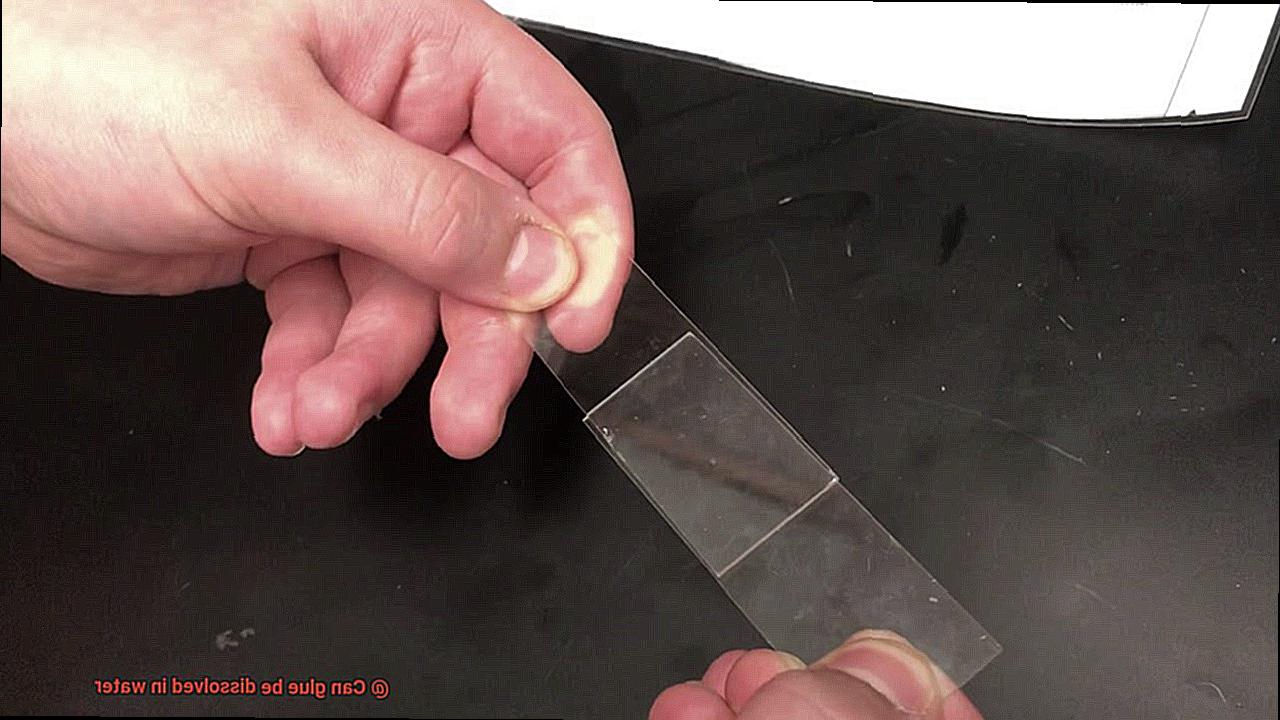
For stubborn or hard-to-reach spots, try using a toothbrush or an old toothbrush to scrub the area gently. This will help remove any remaining glue residue.
Use a Commercial Adhesive Remover
If you’re dealing with a large area of glue or stubborn spots, you may need to use a commercial adhesive remover that’s safe for your particular surface or material. Always follow the manufacturer’s instructions and safety guidelines when using any chemical products.
Rinse and Dry the Area
Once all the glue is removed, rinse the area thoroughly with clean water and dry it with a soft cloth or towel. It’s essential to remove all traces of adhesive residue to prevent it from attracting dirt and dust over time.
How to Remove Non-Water Soluble Glue
We have got you covered with our five effective methods to remove stubborn glue.
Acetone-based Solvent
Acetone is a powerful solvent that can dissolve many types of glue. However, it can also damage certain surfaces, so it’s best to test it in an inconspicuous area first. To use acetone, apply it to a clean cloth or cotton swab and gently rub the affected area until the glue starts to loosen.
Specialized Adhesive Remover
If you’re worried about damaging the surface with acetone, a specialized adhesive remover is a safe alternative. These products are designed specifically for removing tough adhesives and are often safe for use on various surfaces. Always read and follow the instructions carefully when using these products.
Heat
Heat is an effective method for softening and removing non-water soluble glue. To remove glue using heat, use a hair dryer or heat gun to apply heat directly to the affected area. The heat will soften the glue, making it easier to peel off or scrape away with a plastic scraper.
Rubbing Alcohol
Rubbing alcohol is another powerful solvent that can be used to remove non-water soluble glue. Apply rubbing alcohol to a clean cloth or cotton swab and gently rub the affected area until the glue starts to loosen. You may need to apply more rubbing alcohol and continue rubbing until all of the glue has been removed.
Vegetable Oil
Finally, vegetable oil can be used to remove non-water soluble glue from skin or hair. Apply a generous amount of vegetable oil to the affected area and let it sit for a few minutes. Then, gently rub the area until the glue starts to loosen. Rinse the area with soap and warm water to remove any residue.
B2RxoF3uzzQ” >
Also Read: Is Super Glue Waterproof? – Glue Things
Conclusion
To sum it up, the question of whether glue can dissolve in water is not as simple as it seems. The answer varies depending on the type of glue used. If you’re dealing with water-soluble glues like school or white glue, applying water to the bond will weaken and dissolve it due to their natural composition. However, non-water soluble adhesives such as superglue or epoxy require different methods for removal.
Knowing which types of glue are water-soluble and which are not is crucial in avoiding damage to surfaces, clothes, or equipment. When removing glue, several factors should be considered such as identifying the type of adhesive used, the surface it’s attached to, its age, and personal safety.
By understanding how different glues interact with water and other solvents, you’ll be able to handle any sticky situation without breaking a sweat. Whether you’re an experienced crafter or not, knowing how to remove glue safely and effectively can save you time, money and frustration.
So, next time you find yourself stuck in a sticky situation, remember these tips and tricks for getting unstuck.

